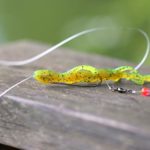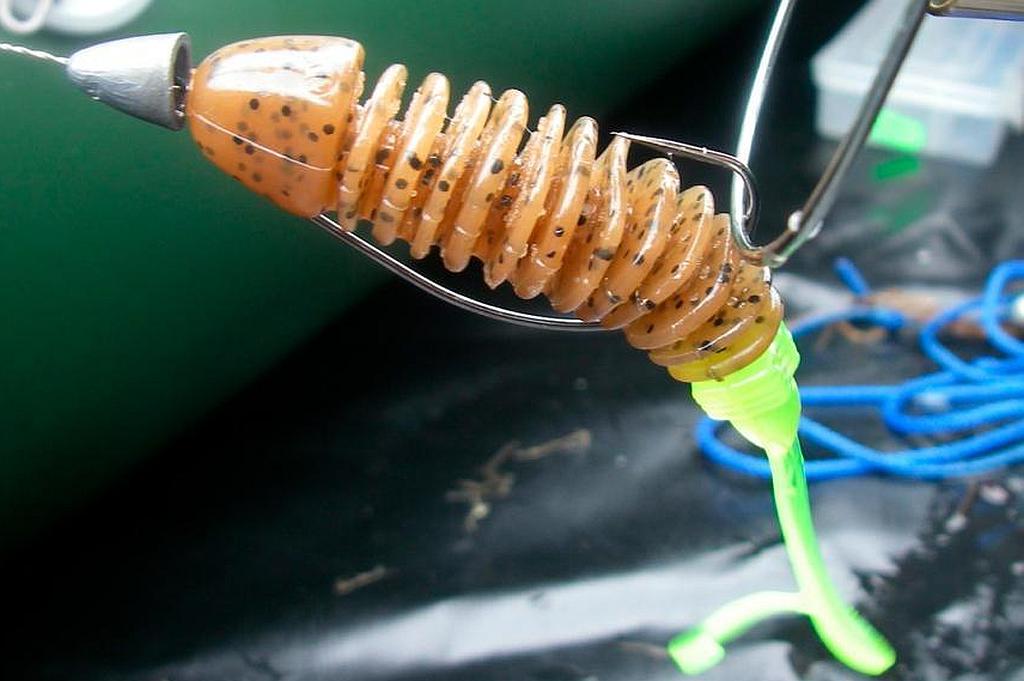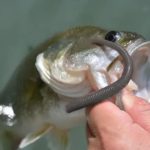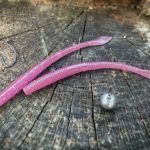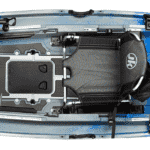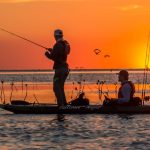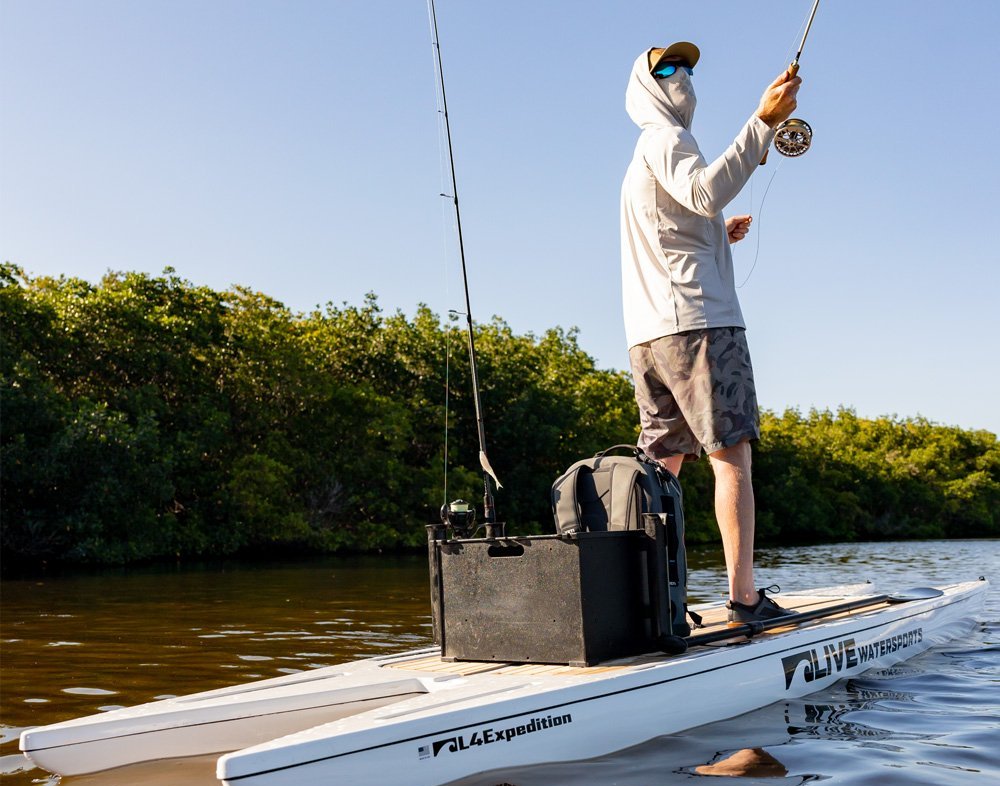An all-time classic, the Carolina Rig is a tried and true rig for beginner and expert anglers alike. Below we talk about when, where, and how to fish it.
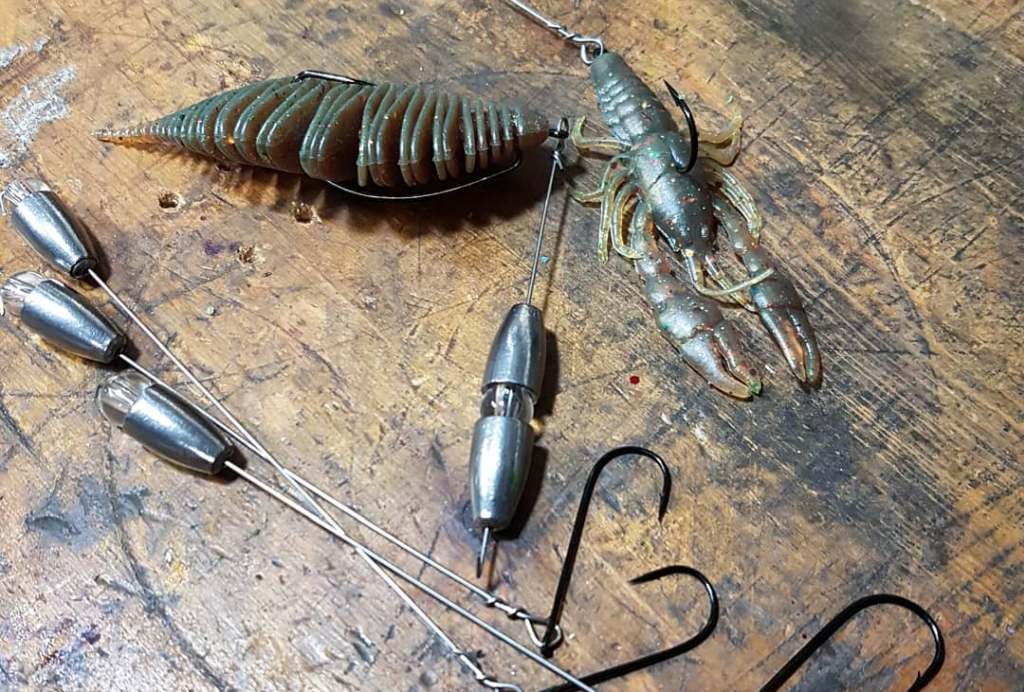
A finesse fishing technique originally developed in Japan, the Tokyo Rig has become a popular bass fishing rig worldwide. Its unique rigging allows it to be extremely versatile and in this article we will look at how to set up and fish the Tokyo Rig.
As an affiliate of Amazon and other retailers, we may earn a small commission when you buy via our links, at no additional cost to you. Thank you!
What is a Tokyo Rig?

The Tokyo Rig is an adaptation of the popular Jika Rig. With a Jika Rig, a soft plastic bait is set up similarly to a Texas Rig, but with a Drop Shot weight attached to the hook eye and allowed to hang below the bait.
With the Tokyo Rig, however, the Drop Shot weight (or other weight style) is hung below the hook eye by several inches with the use of wire.
The advantage to the Tokyo Rig over the Jika Rig is that the dropper keeps the bait suspended a few inches off the bottom. This, in turn, allows for a cleaner eat and better hook set while fishing cover.
What Sets the Tokyo Rig Apart?
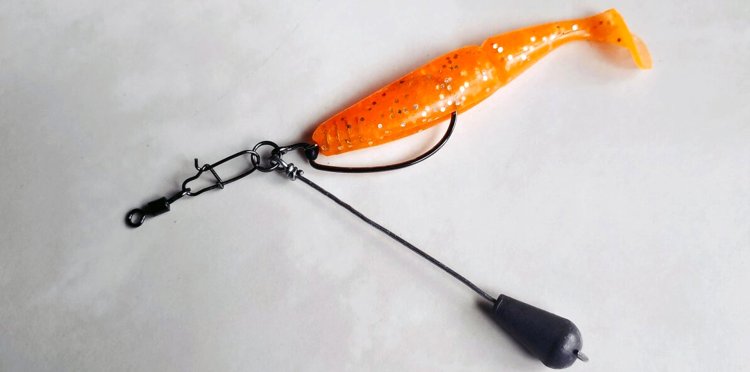
At first glance, bass anglers will notice rigging similarities between a Tokyo Rig and a Drop Shot Rig or Texas Rig. The question, of course, arises as to why bother fishing a whole new rig?
Though they’re similar, there are key differences between these rigs that set Tokyo Rig fishing apart.
Tokyo Rig vs. Drop Shot Rig
With your standard Drop Shot Rig, the weight is attached to the end of the line and the lure is suspended anywhere from 12”-20” above it.
On a Tokyo Rig, the dropper wire is only a few inches long. This keeps the bait just above the bottom. In addition, the rig is on a swivel which allows for a much more natural presentation when compared to the drop shot rig.
Tokyo Rig vs. Texas Rig
On a Texas Rig, the weight is placed directly in front of the bait on the main line. Though this is great for accurate casts, it often lacks a realistic presentation to fish since the weight is physically touching the lure.
The Tokyo Rig solves this issue with its dropper wire. It allows the bait to float far enough away from the weight to look natural, even in thick cover or muddy bottoms.
Setting Up a Tokyo Rig
Setting up a Tokyo Rig is very similar to setting up a Texas Rig.
I start with a soft bait and thread my worm hook or EWG hook through the nose, out the bottom, and back into the body.
Next, I take a weight and slide it onto the wire dropper. It’s important to remember that if you’re using a weight with a taper, like a bullet weight, to point the tapered end toward the bait.
To secure the weight onto the dropper, I simply bend the wire 90 degrees to act as a stop. If you’re using heavier weights, you might need a few extra bends to ensure the weight doesn’t slip off.
Premade Rigs?

Some companies offer premade Tokyo Rigs and Tokyo Rig hooks such as VMC. These are great options just for the sake of hassle-free set up.
If, however, you would like to make your own Tokyo Rigs, the set up is pretty straightforward. You will simply need the following:
- Split Rings
- Split Ring Pliers
- Wire Leader (I like single strand stainless Malin wire for this)
- Wire tool (optional)
- Barrel Swivel
- Favorite hook of choice (offset, EWG, or flipping hook)
Start by using your split ring pliers to add the hook and barrel swivel to the split ring.
From there cut your wire to length. I like to cut a few extra inches to account for shortening the dropper with twists.
Next, simply thread the wire through the split ring and twist it back into itself using three barrel twists and three normal twists (This is where using a wire tool makes life easier).
And that’s it! From there you can slide your weight on the dropper wire and add whatever soft plastic you’d like. Remember to tie the main line off to the barrel swivel rather than the split ring to avoid twisting the line.
Best Tokyo Rig Soft Plastics
What’s nice about the Tokyo Rig is that pretty much any of your readily available soft plastic baits work great with them. At the end of the day, if it can be rigged Texas style, it can work on a Tokyo Rig.
Senkos
Senkos by Gary Yamamoto are my favorite baits for a Tokyo Rig. Keeping the worm just a few inches off the bottom can really help you put more fish in the boat.

Keep in mind that if you’re using senkos on the smaller side, stick with a regular offset worm hook rather than an EWG hook. The standard offset worm hooks are a little less bulky and make for a better presentation.
Creature Baits
Creature baits are easily some of the best baits to use with this rigging style. Brush Hogs, Craws, and Rage Bugs are some of my go-to’s when it comes to fishing Tokyo Rigs.
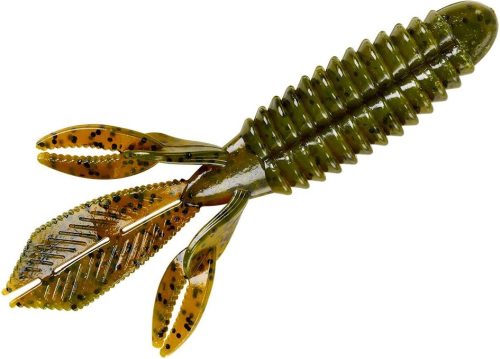
Their unique designs give a wide variety of movement underwater that fish absolutely love.
Unlike the senkos, you will definitely want to go with your larger EWG hooks for a creature bait since they’ve got such big bodies.
Swimbaits
If you’re looking for a little faster retrieve, your best choice is using some of your paddle tail swimbaits with a Tokyo Rig.

Fished a little differently than the worms and creatures, swimbaits can target bass suspended in the water column, not just on the bottom. I like to go with a slightly lighter weight for this method to keep the paddle tail from immediately going straight to the bottom.
Retrieved at the right speed, the swimbait’s tail gives just enough action to really entice fish. With these guys, I’m often not fishing super close to cover. Instead, I’m focusing on catching bass over deeper water or rocky bottom.
Hooks and Weights for Tokyo Rig
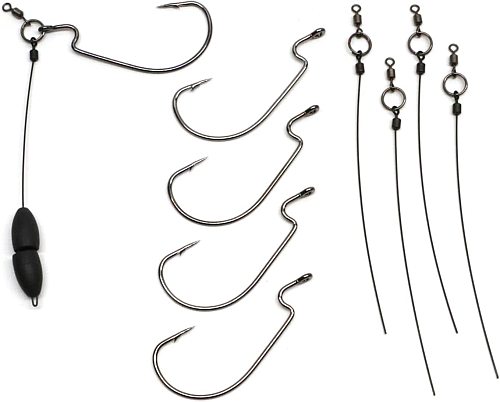
Hook selection for Tokyo Rigs is pretty straightforward. Any hook that you might use for a Texas Rig works great here.
Typically you’ll be looking at offset worm hooks for your smaller worms (in 1-2/0) and wide gap to extra wide gap hooks for larger baits (in 2/0 and up). A Flipping hook can also work depending on the soft plastic used.
Weight selection for a Tokyo Rig is situational. Barrel weights, egg sinkers, bullet weights, and even punch weights can be used with these rigs depending on what you’re trying to accomplish.
If I’m trying to slowly drag the bait across the bottom, I’ll go with a slender profile weight like a small bullet or a barrel. But if I’m trying to punch through heavy vegetation or grass mats, I like to stick with heavier punch weights or egg sinkers.
These weights can range anywhere from ⅛ oz for clear water and slow dragging to ¾ oz for punching through mats.
Rods and Reels for Tokyo Rig
When I fish the Tokyo Rig, I usually prefer a 7’ medium heavy casting rod with a baitcaster. You really need this power to catch bass in a thicker cover.
If I’m specifically fishing thick mats of grass and trying to punch through, I’ll switch to an even heavier flipping stick.
Best Line for Tokyo Rig
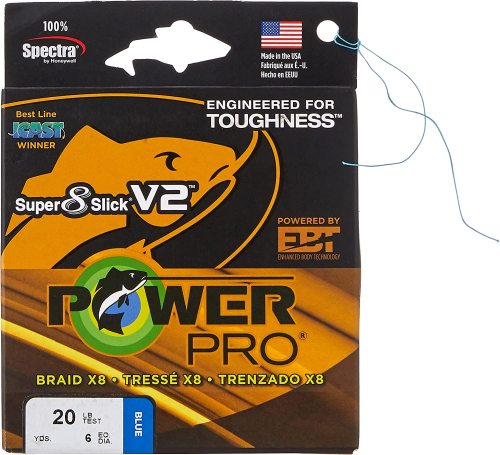
Though you can get away with simple monofilament, I prefer to stick with the braided line when I fish a Tokyo Rig. The advantage of a braided line is not only how tough it is, but its lack of stretch means you can feel every weed or obstacle on the hard bottom. I like to add 2 or 3 ft of fluorocarbon as a leader.
If you fish in super clear water, you might want to use fluorocarbon as your main line.
My personal favorite braid is Power Pro Super Slick. For fluorocarbon, you can’t go wrong with Seaguar Red Label.
How to Fish a Tokyo Rig
Fishing a Tokyo Rig can be very similar to fishing a Texas Rig. You slowly swim it across the bottom in search of a hook up. There are, however, other effective ways to fish it that really make this unique rig stand out.
Flipping and Pitching
Flipping and pitching a Tokyo Rig from a boat close to cover is an excellent way to target big bass. Obviously, retrieving the bait gives it great action, but you have the ability to keep these rigs very close to cover while still enticing fish.
I like to start flipping close to heavy cover or grass and allow the bait to sink. From there, I start slowly reeling with occasional vertical pops with the rod tip. This retrieve makes the bait bounce along the bottom.
Pop or lift the rod tip, allow the bait to sink, slowly reel in the slack, and repeat. This fishing method can keep the bait right in the strike zone while producing good action.
Punching
At first glance, a Tokyo Rig seems rather bulky. Hardware hanging off of the plastic lure in all directions sounds like a recipe for disaster when dealing with grass lines and trying to punch through weeds.
Surprisingly, these rigs perform great while punching. Given that all parts of the rig can move independently, the moment it hits the weeds, bait, wire, and weight can freely wiggle their way through.
Even if the bait doesn’t come out clean underneath a heavy grass mat, a simple pop can oftentimes shake loose anything stuck to it. Since they’re typically rigged weedless, these are great options to target bass below thick vegetation
Bed Fishing
If you’ve ever targeted bass on beds, you know how important it is to physically keep the bait in the bed. Simply retrieving a rig through the bed won’t quite cut it.
A Tokyo Rig is perfect for this sight fishing method. It can practically be fishing in one spot.
I like to start by casting just beyond the bed and slowly retrieve the bait into the bed. It’s better to do this than simply cast directly into the bed because the rig splashing right on top of a bedded fish is almost guaranteed to spook them.
Once the bait is in the bed, I begin popping or jigging the bait vertically. The dropper weight will stir up bottom sediment while the bait remains suspended a few inches above. This looks like something messing with the bed and will absolutely drive the bass crazy.
When to Fish Tokyo Rigs
What’s great about a Tokyo Rig is that you can fish it practically year round. It works great in a wide variety of water conditions and depths.
Clear Water vs. Dirty Water
Since almost any soft plastic bait can be added to a Tokyo Rig, bass anglers can tailor what they’re presenting depending on water clarity.
In clean, clear water, I like to stick with smaller profile baits like smaller senkos or paddle tails. Bass tend to be a little rig shy in clear water, so having smaller-sized baits and hardware can improve your odds.
Keep in mind that in clear water you’ll want to add a fluorocarbon leader to avoid spooking fish.
Fishing a Tokyo Rig in dirty water is practically the opposite. Here’s where you’ll want to up the bait size and break out the bigger creatures. I like to stick with darker colors here. The large size of the bait displaces more water and is easier for a fish to track.
Deep Water vs. Shallow Water
Bass will change depth depending on the time of year and water temperature. On super hot summer days and cold winter days, look for bass in deeper water.
Thanks to the wide variety of weights that can be added to a Tokyo Rig, they can be fished super deep quite effectively. Just remember to be patient and give the bait enough time to really get down to the depth where the bass are hanging out.
As mentioned before, a Tokyo Rig also works well in shallow water targeting bass on beds. Spring and fall are great times of the year to look for bass in the shallows, and this rig is fantastic for targeting them using lighter weights.
FAQ
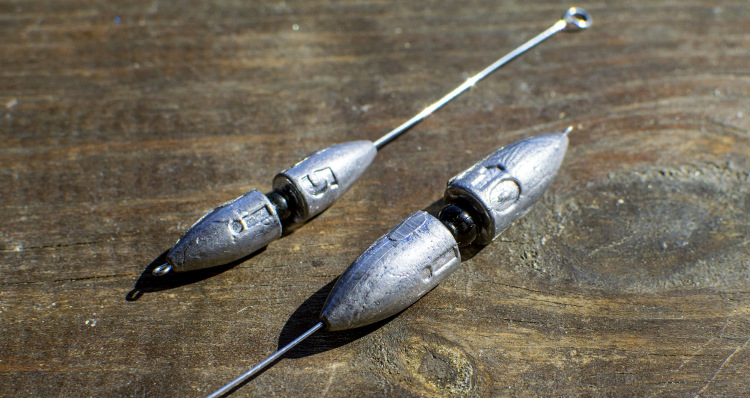
A Tokyo Rig is primarily used to target bass. Its unique design allows a bait to remain suspended a few inches off of the bottom and in the feeding zone of bass.
Almost any soft plastic, an extra wide gap hook, wire, swivel, split ring, and weight. The wire is attached to the split ring and the hook and swivel are threaded onto the ring. The weight is then slid onto the dropper.
Bullet weights, egg sinkers, punch weights, and barrel weights are all great options for a Tokyo Rig. Weight selection depends on how deep you’re fishing and what type of cover you’re fishing around.

